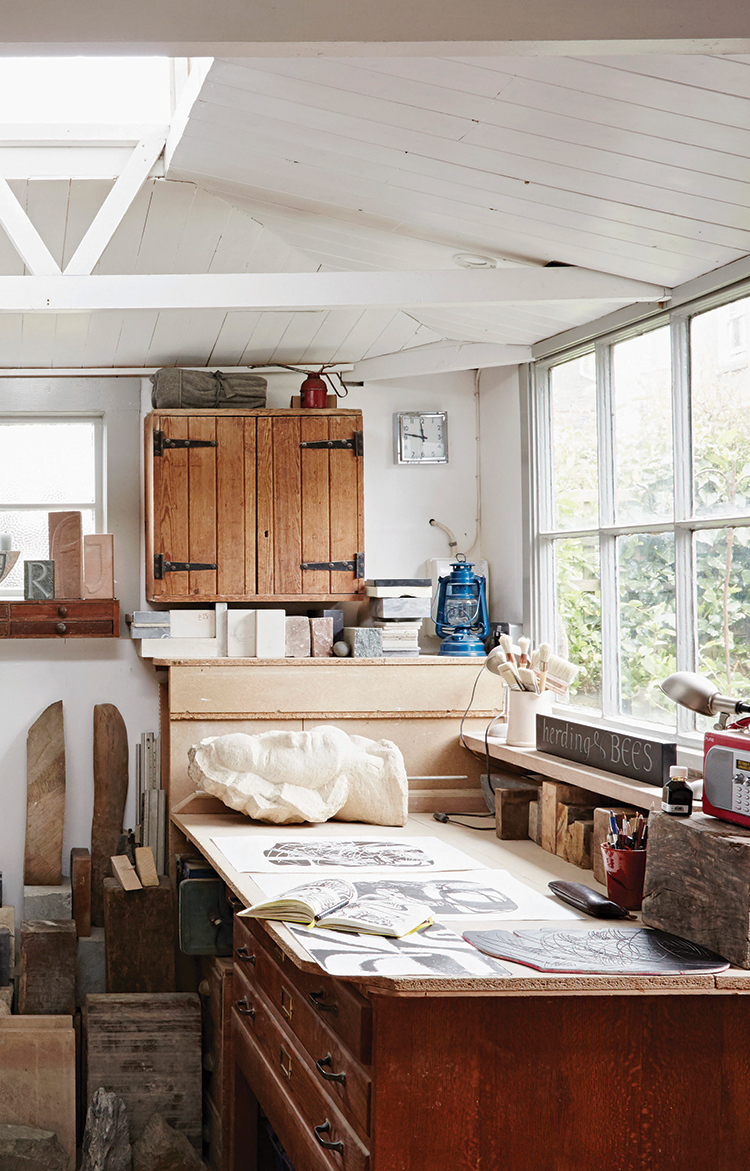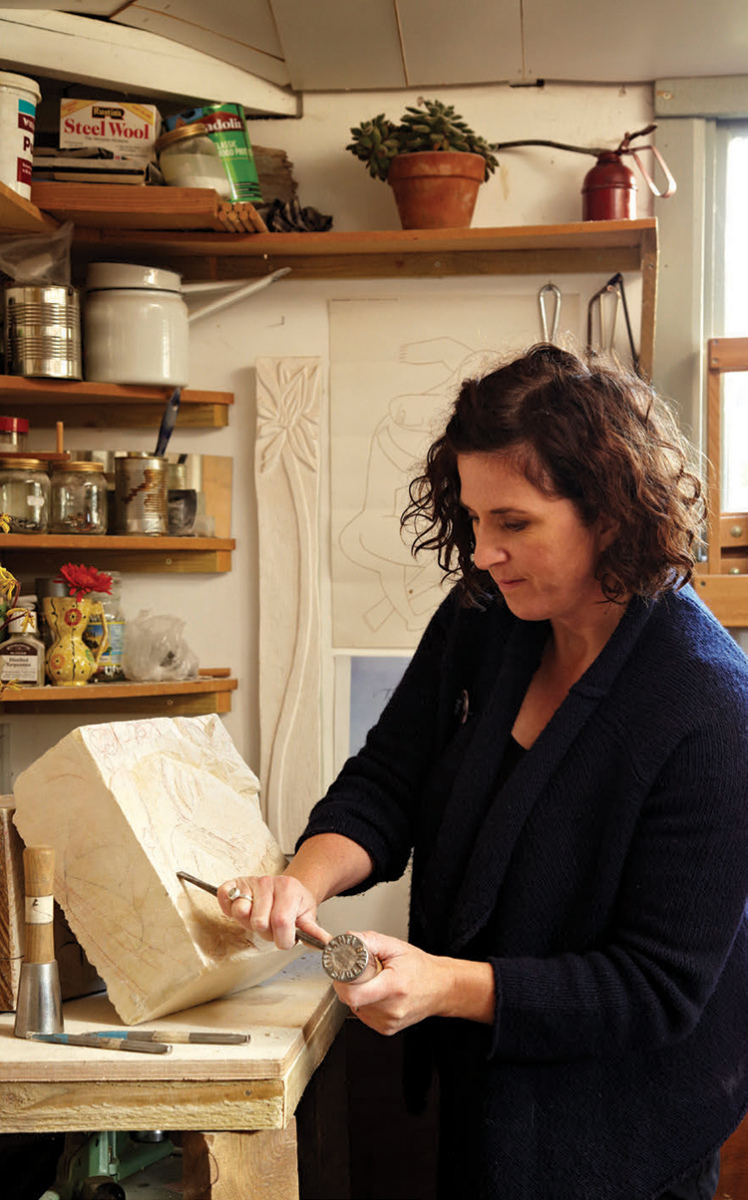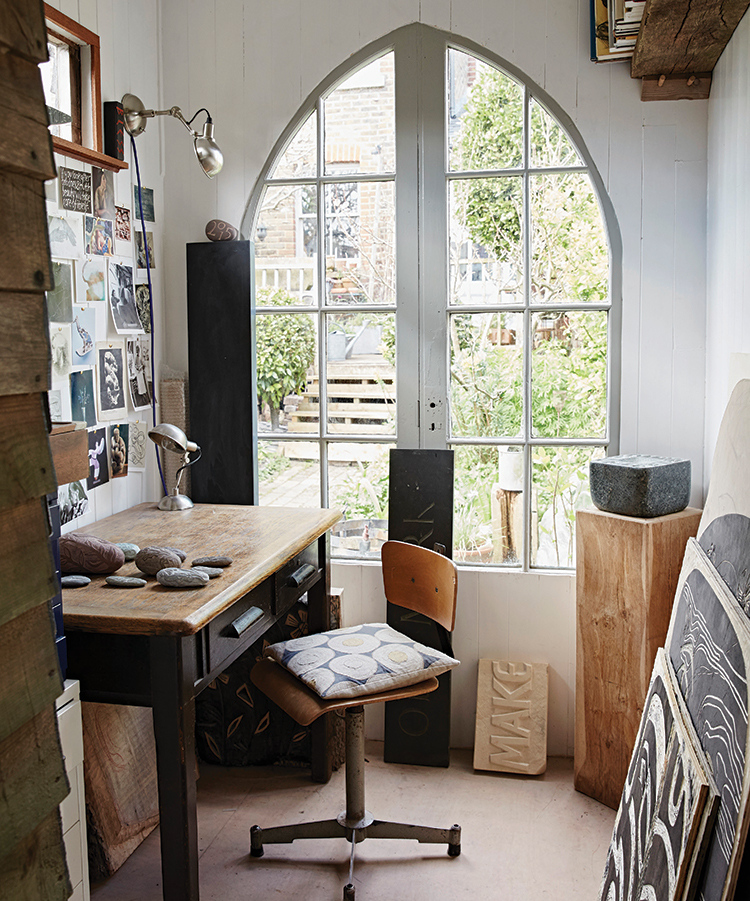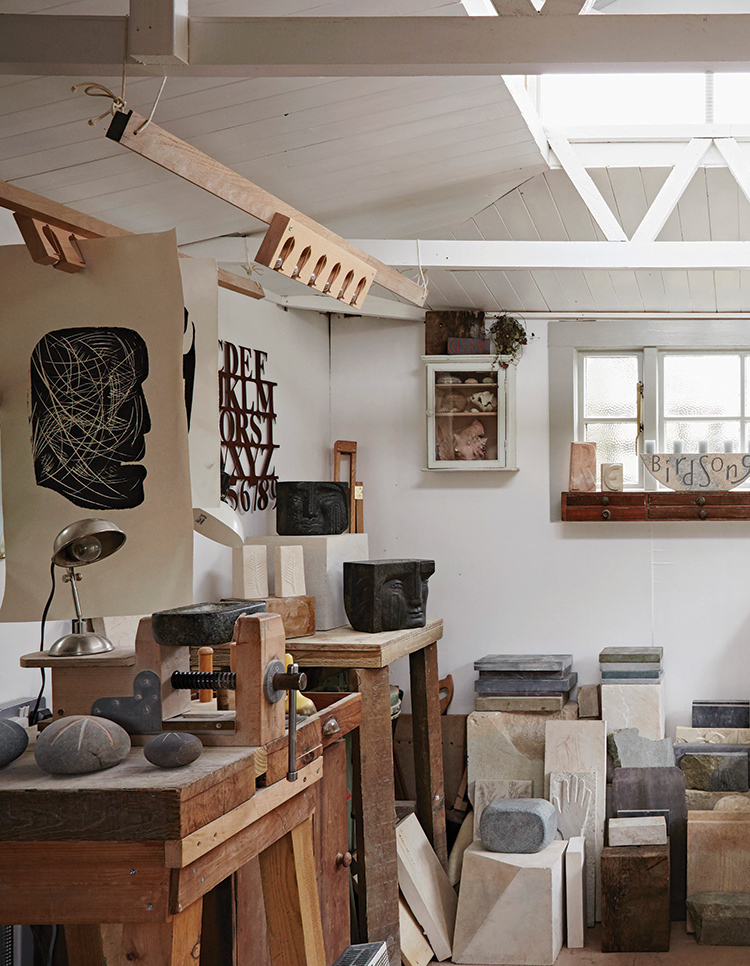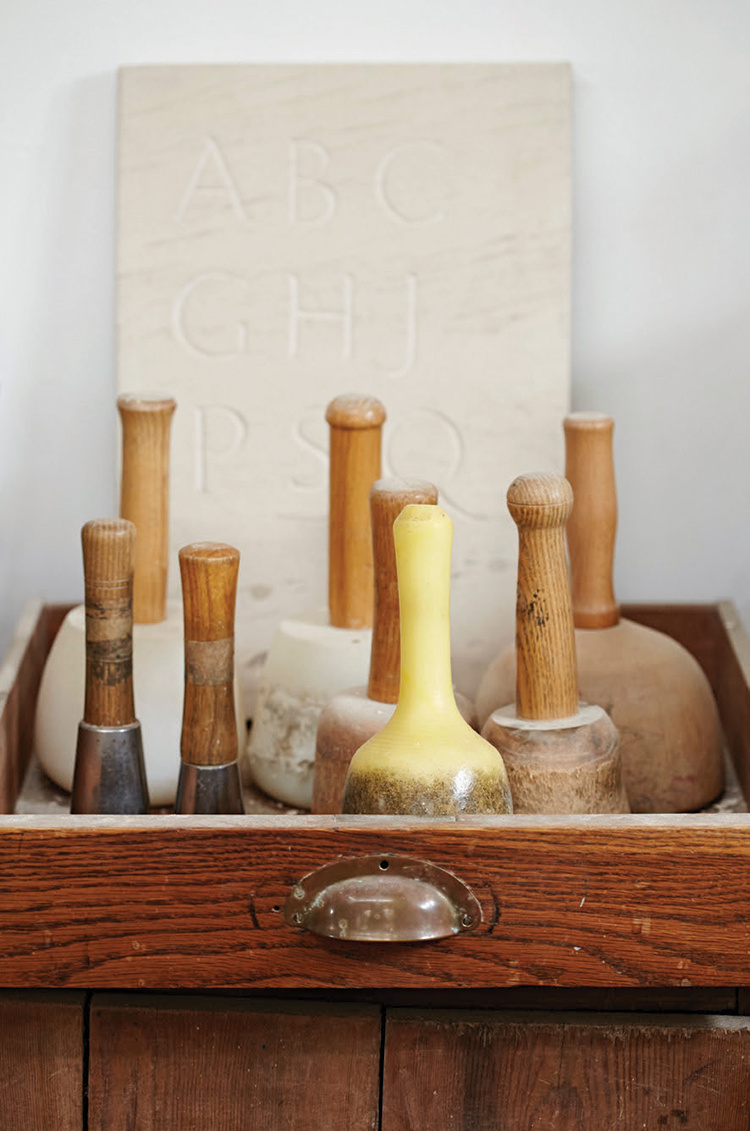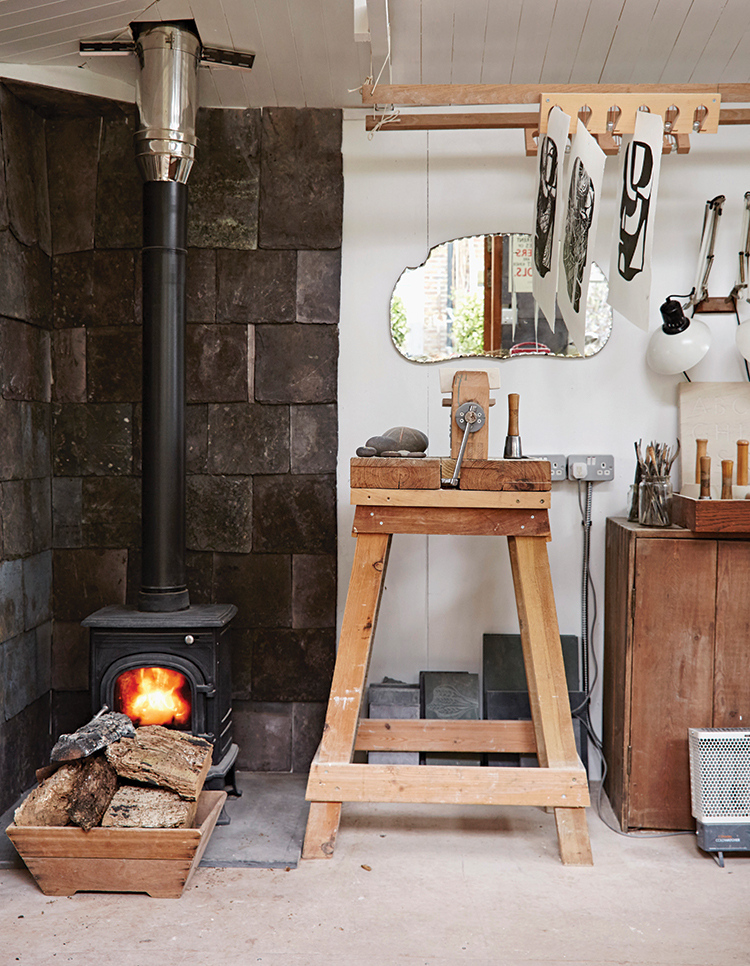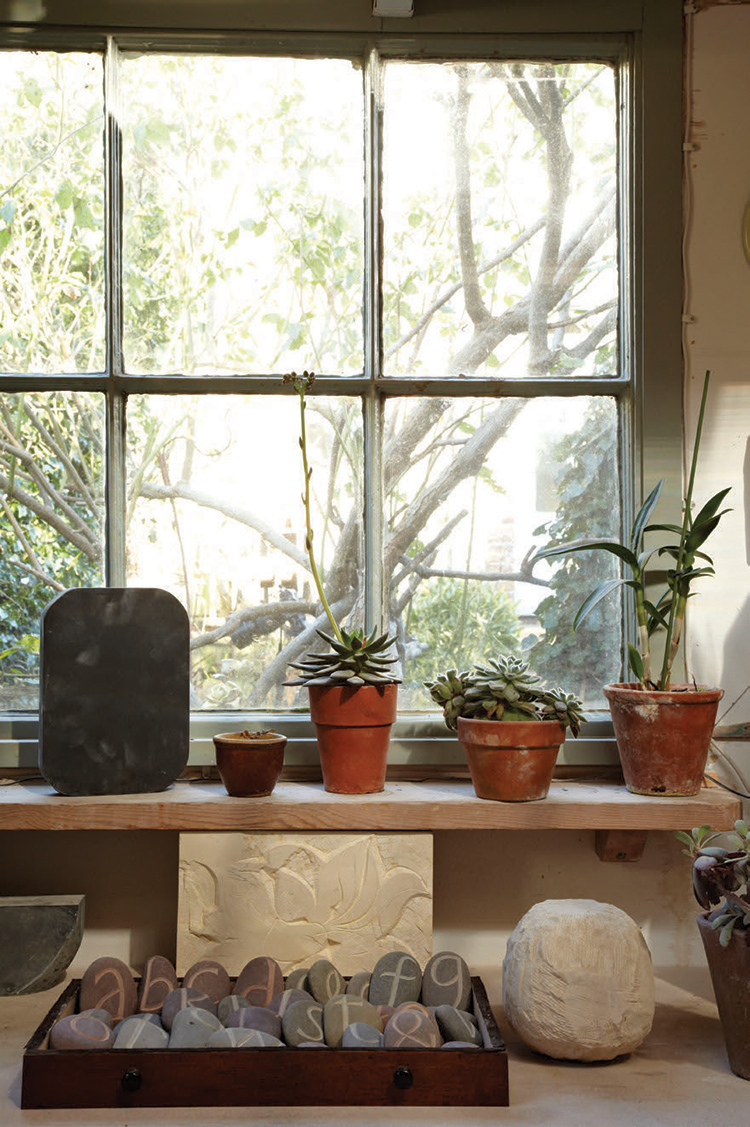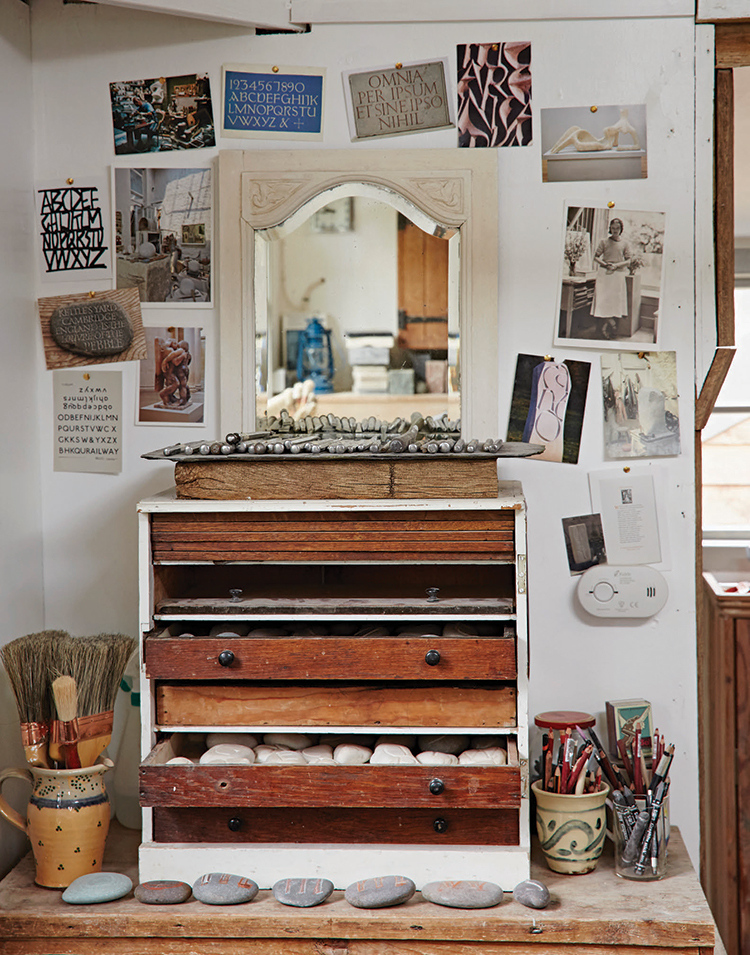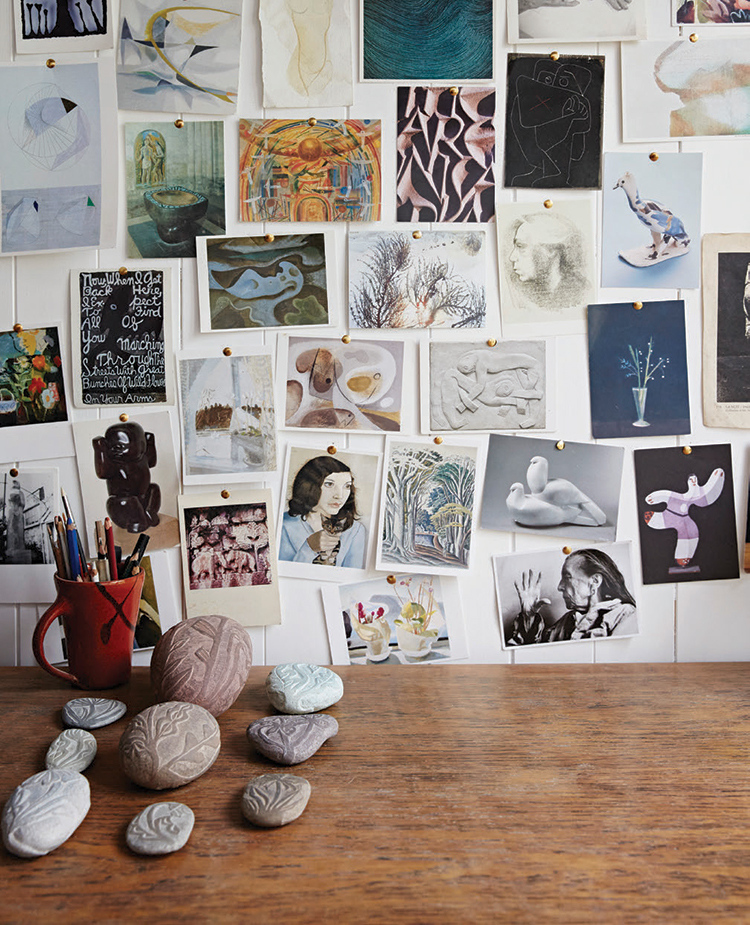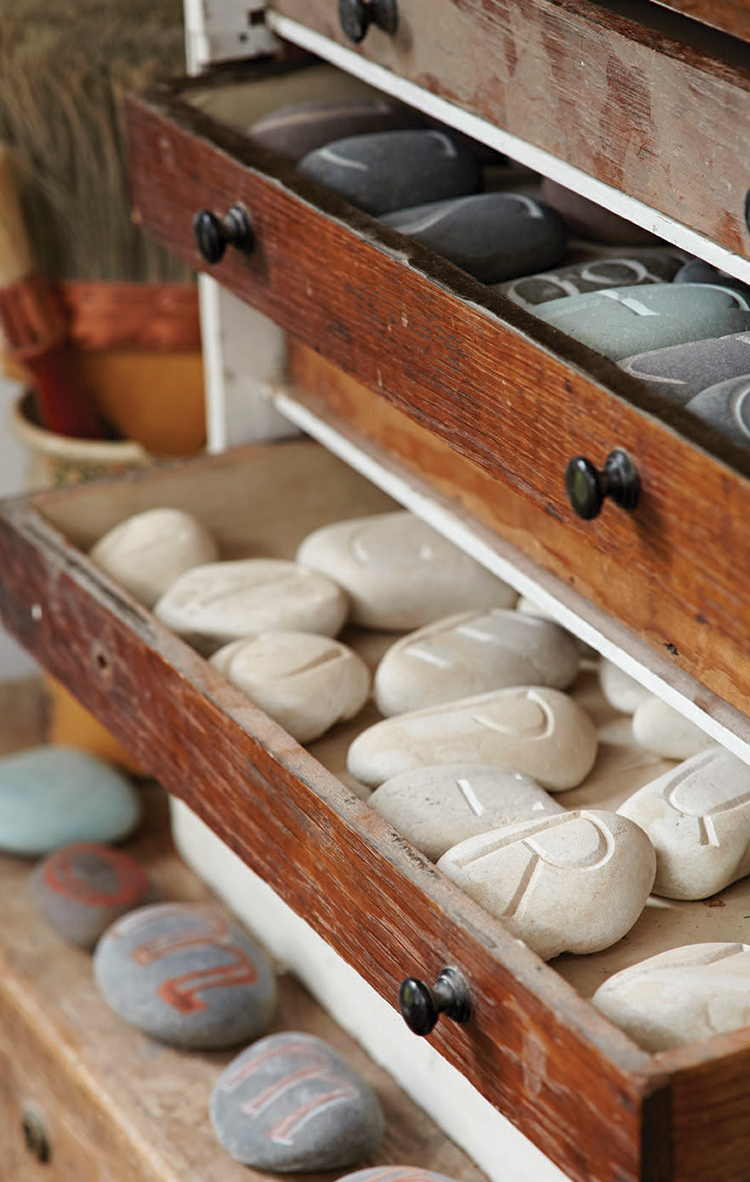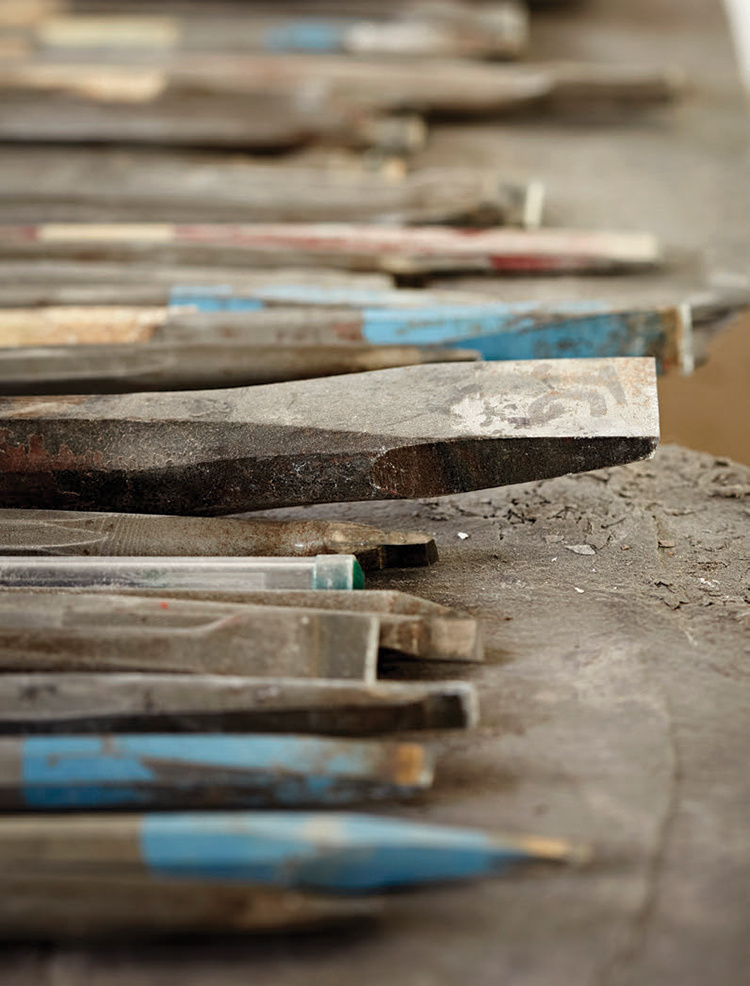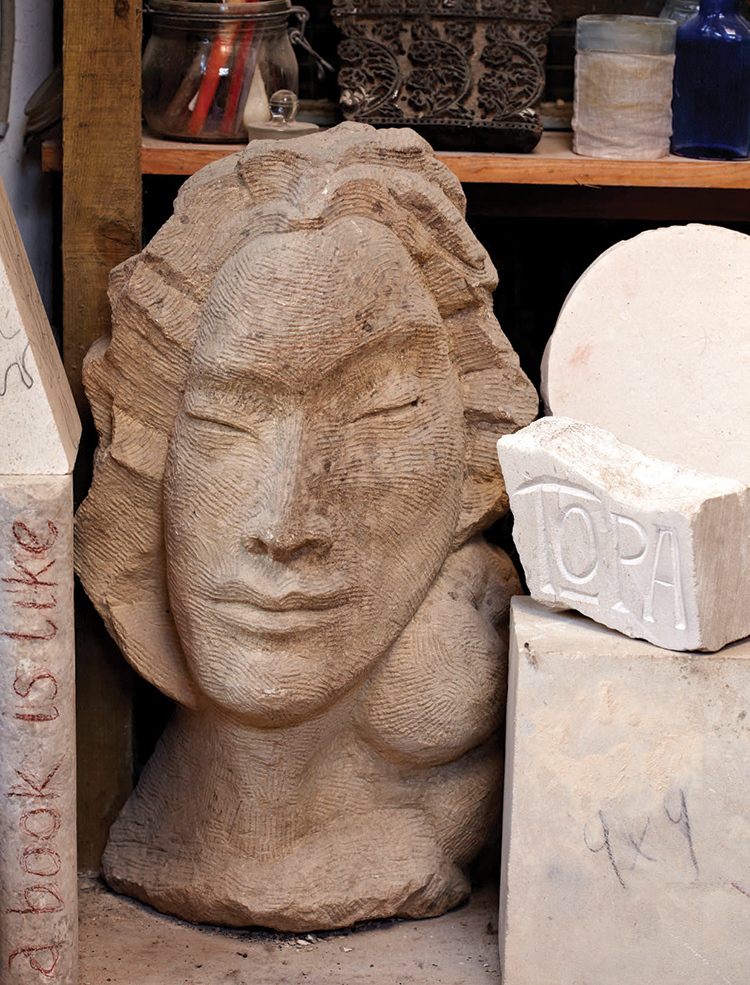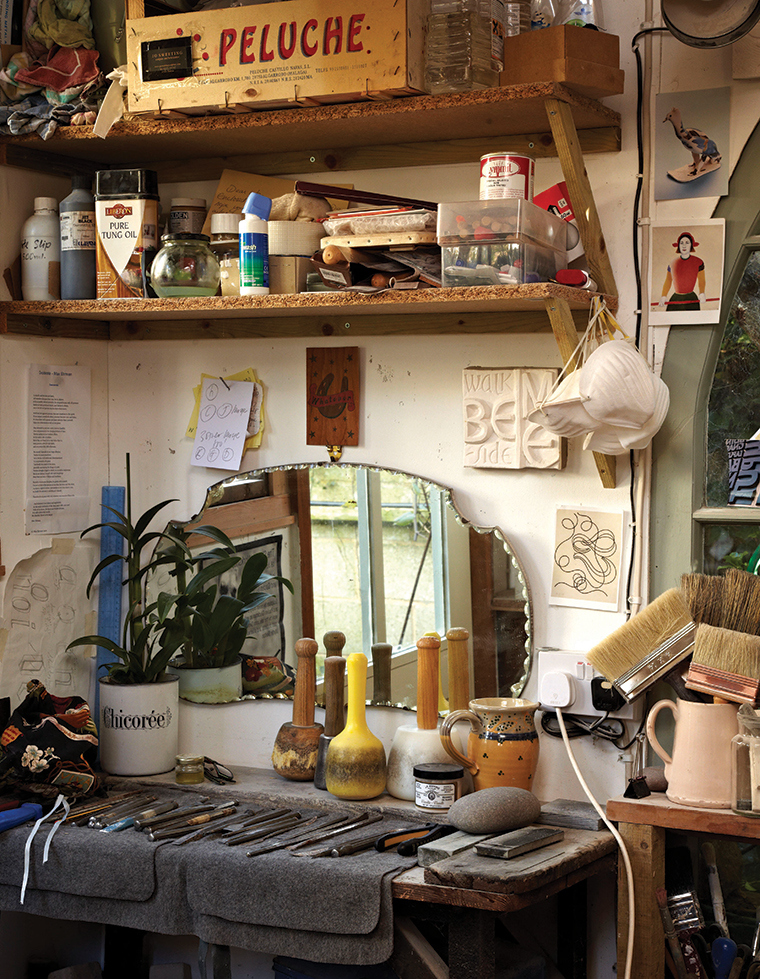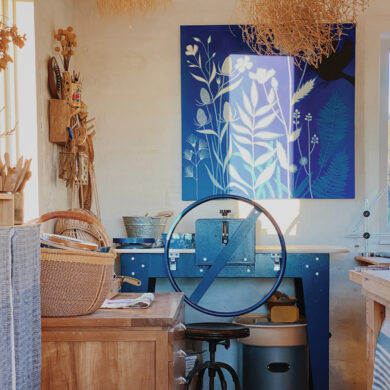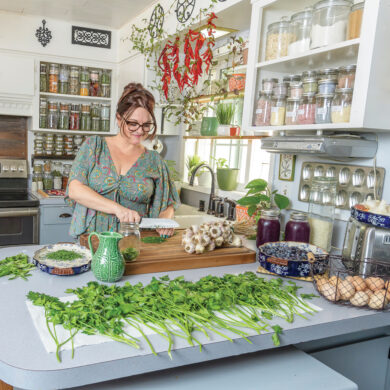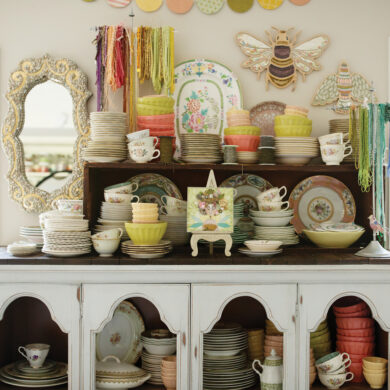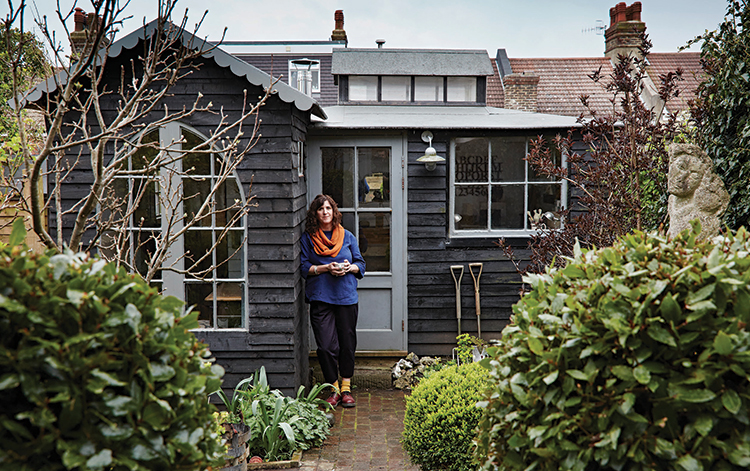
I come from a fine art and sculpture background. I completed a two-year foundation course, which was amazing. I got to try everything from metalwork to photography. We studied life-drawing, and I loved working with clay, which is why I then went to Leeds to pursue a degree in sculpture.
I admired the work of the letter carver and sculptor John Skelton, the nephew of Eric Gill from the Arts & Crafts movement. When John’s daughter, Helen Mary Skelton, started holding stone carving evening classes, I went along. That was it for me. That was 20 years ago.
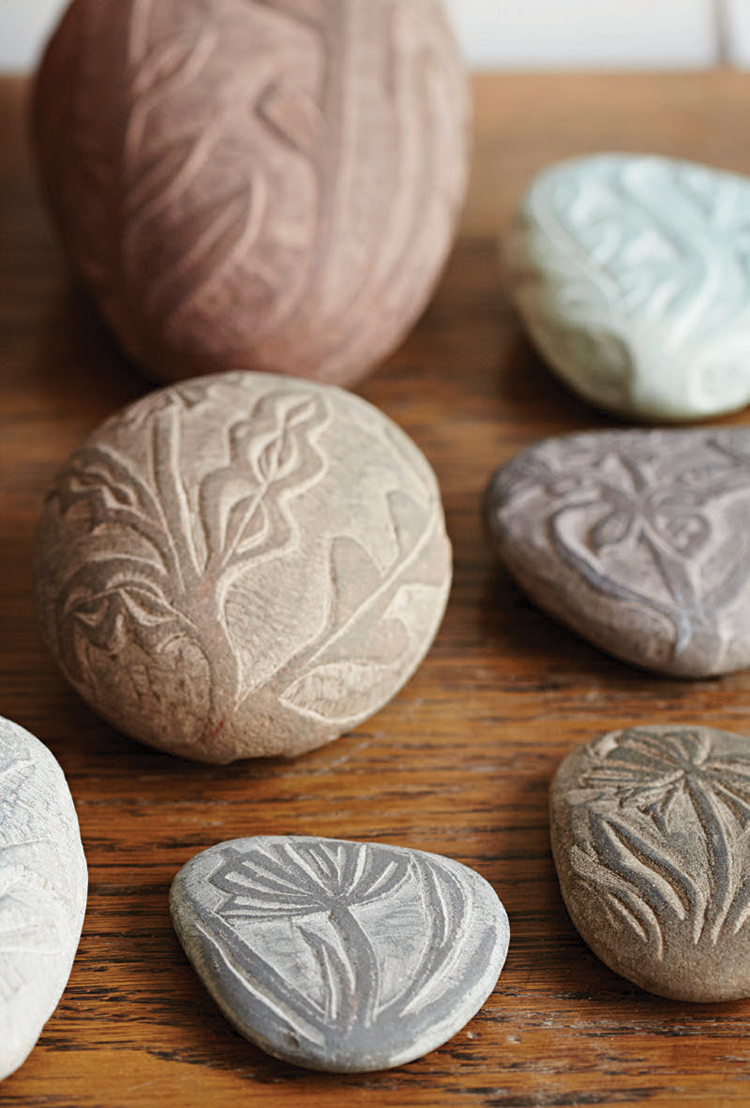
“What I felt, at the time, was my biggest disappointment ended up shaping the way I work in a wonderful way.”
I ended up working as an art teacher back in my hometown of Brighton, although I still created pieces for myself. In the end, I find that if I really want to do something, I find a way.
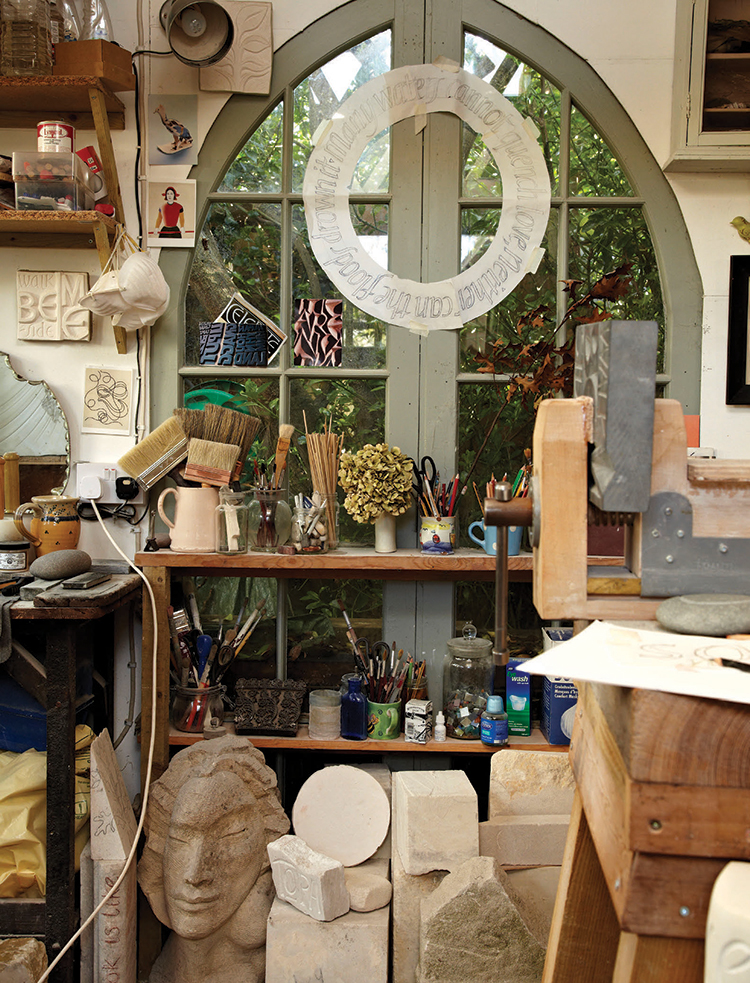
I still teach, one-on-one in my studio, and a couple of times a year at West Dean College in West Sussex. But most of the time, I work on my own pieces. Stone is very different to clay. You can walk away and leave it. But it requires a leap of faith. As children, we are taught to play with building blocks to make things. Carving, on the other hand, means having the courage to take away rather than to add.
Although I can cut a perfect line and make eyes look like eyes, all of my heads end up having different expressions. I try to capture fleeting moments within my works. When I carve tiny summer blooms, they become part of the stone, something monumental that could last for thousands of years.
I have to have courage to stay with a piece, which can take up to a year to create. For a long time when I’m carving, it’s nowhere near where I want it to be. It’s ugly and it’s rough, often for months. Sometimes I close my studio door and walk away for a while. Then suddenly I see it and think, “Yes!”
When I work on a commission, I’m honored by the faith people have in me. Blocks of stone might be similar, but the works I create from them will always develop differently. With big pieces, I work in sections. When my work gets beyond a certain scale, I can’t work in my garden studio, so I use a workshop in Wivelsfield, East Sussex, where I support the stone with gantries. At the end of each commission comes the scary bit for me: the installation. The piece I installed in someone’s garden this week weighed nearly two tons. Block on block, stone is incredibly strong. When lifting pieces into place, however, it’s easy to suffer breaks and chips.
“I the sculptor am the landscape.”
— Barbara Hepworth
The worry of installations exhausts me. I pay people to help, and they know what they’re doing, but they could still get hurt. If my work damaged anyone, I’d feel responsible. The relief when it’s installed, with no injuries and happy clients, is quite literally a weight off my mind. In this case, a two-ton weight!
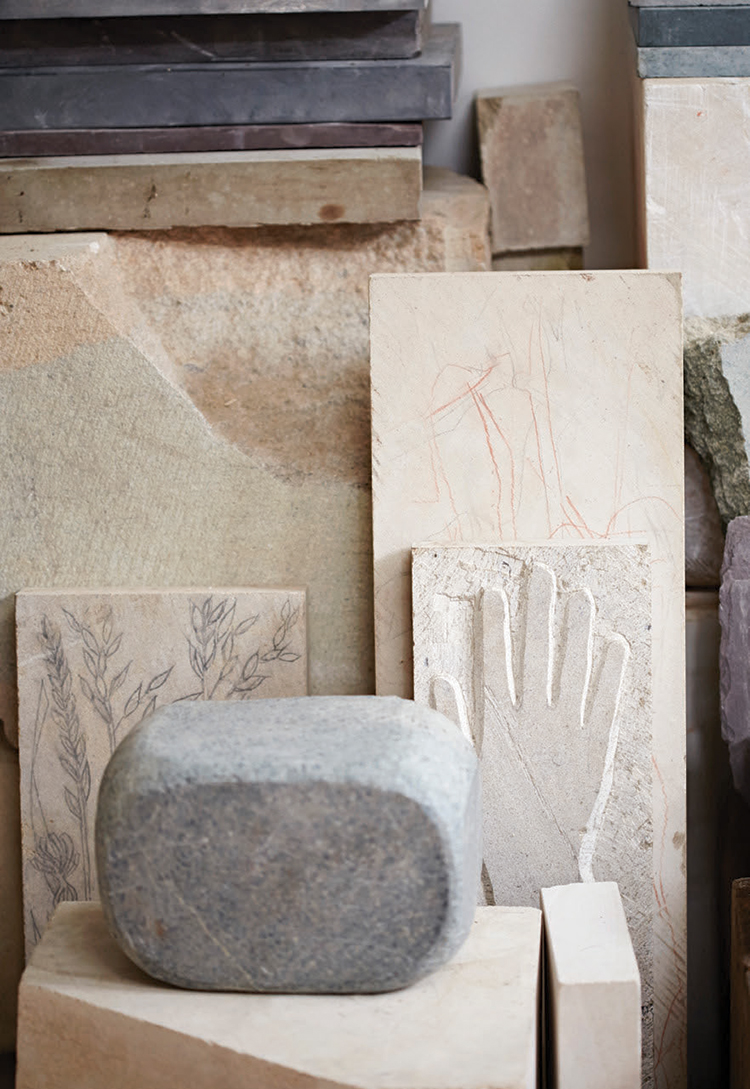
Everything about the landscape and the way we move through it inspires me. I’ve not been off this island for 20 years. I dream of a studio like Dame Elisabeth Frink’s in Dorset, looking out over a landscape I love, with space to work on really big pieces—and space outside to grow the trees and plants that inspire my work. I need to be able to live where I work, as I do now. It means I can be in my studio whenever I need to be and still be there for my family. Beyond that, all I want is to work forever.
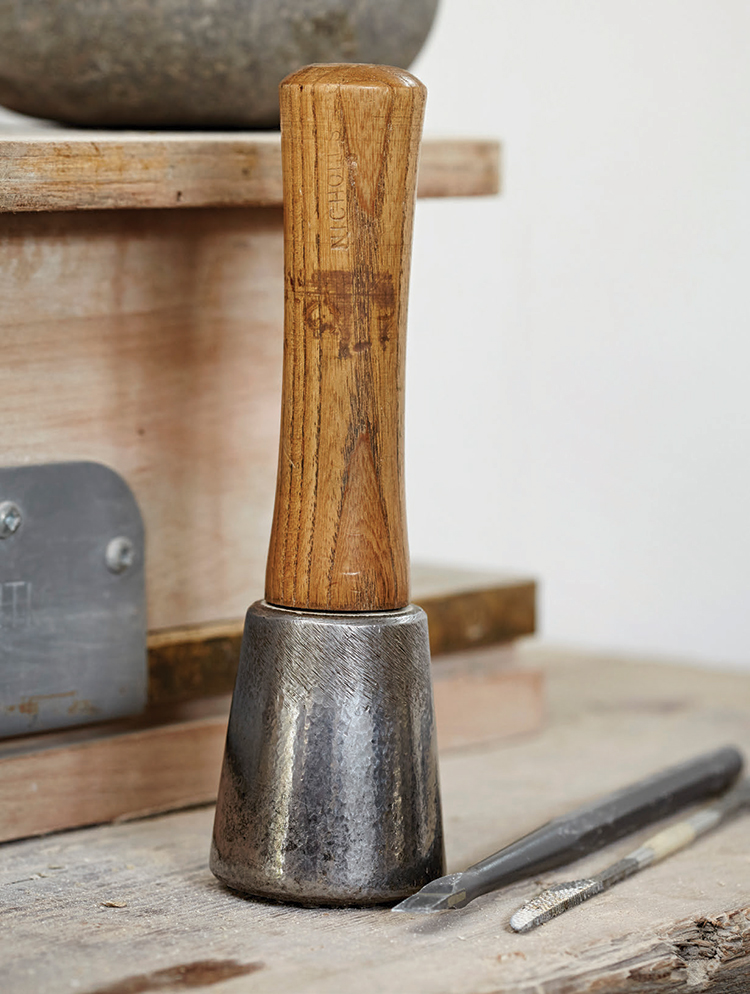
P.S. I Love This!
A former student made me a perfectly-balanced, tiny mallet using leftover bronze. The bronze head hits the chisel to cut stone. When I first visited John Skelton’s workshop he had one, like mine, with a handle fashioned from elm. Now I have one that was made for me, which makes it doubly special.

